-
 Bitcoin
Bitcoin $78,460.7755
-4.88% -
 Ethereum
Ethereum $1,558.5692
-11.54% -
 Tether USDt
Tether USDt $0.9994
0.02% -
 XRP
XRP $1.8772
-9.65% -
 BNB
BNB $551.3710
-4.96% -
 USDC
USDC $0.9999
0.01% -
 Solana
Solana $105.7177
-8.11% -
 Dogecoin
Dogecoin $0.1473
-8.99% -
 TRON
TRON $0.2275
-4.91% -
 Cardano
Cardano $0.5731
-8.32% -
 UNUS SED LEO
UNUS SED LEO $8.9347
-1.29% -
 Toncoin
Toncoin $3.0026
-9.25% -
 Chainlink
Chainlink $11.2237
-8.26% -
 Stellar
Stellar $0.2300
-8.37% -
 Avalanche
Avalanche $16.4153
-4.20% -
 Shiba Inu
Shiba Inu $0.0...01131
-4.94% -
 Sui
Sui $1.9699
-5.74% -
 MANTRA
MANTRA $6.2737
1.56% -
 Hedera
Hedera $0.1441
-6.80% -
 Polkadot
Polkadot $3.6006
-7.40% -
 Bitcoin Cash
Bitcoin Cash $272.0494
-7.59% -
 Dai
Dai $0.9999
0.00% -
 Litecoin
Litecoin $70.2187
-10.82% -
 Ethena USDe
Ethena USDe $0.9986
-0.03% -
 Bitget Token
Bitget Token $4.0633
-6.47% -
 Pi
Pi $0.5819
-6.56% -
 Hyperliquid
Hyperliquid $11.0739
-2.52% -
 Monero
Monero $199.4060
-5.67% -
 Uniswap
Uniswap $5.1122
-8.93% -
 OKB
OKB $51.0005
-5.20%
How are virtual currency transactions conducted?
Cryptocurrency transactions, secured by cryptography, are broadcast to a decentralized network for validation by miners or validators, who add them to a blockchain after verifying digital signatures and sufficient funds, incurring transaction fees that vary by cryptocurrency and network congestion.
Mar 20, 2025 at 10:43 pm
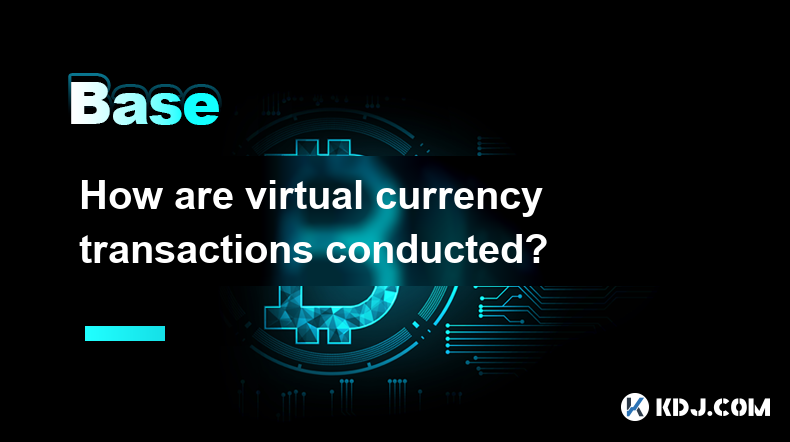
Key Points:
- Virtual currency transactions rely on cryptographic techniques for security and verification.
- Transactions are broadcast to a decentralized network of computers (nodes) for validation.
- Miners or validators process transactions and add them to a blockchain.
- The process involves digital signatures, public and private keys, and transaction fees.
- Different cryptocurrencies have varying transaction speeds and fees.
- Understanding wallets, exchanges, and peer-to-peer transfers is crucial for conducting transactions.
How are Virtual Currency Transactions Conducted?
Virtual currency transactions differ significantly from traditional financial transactions. They leverage cryptography and a distributed ledger technology known as a blockchain to ensure security and transparency. Instead of relying on intermediaries like banks, transactions are validated by a network of participants. This decentralized nature is a core principle of most cryptocurrencies.
The process begins with the sender initiating a transaction. This involves specifying the recipient's public address, the amount of cryptocurrency to be sent, and a transaction fee. The transaction details are then digitally signed using the sender's private key. This signature verifies the authenticity and authorization of the transaction. Think of it like a digital fingerprint uniquely identifying the sender.
The signed transaction is then broadcast to the network of nodes maintaining the cryptocurrency's blockchain. These nodes verify the transaction's validity, checking for things like sufficient funds in the sender's wallet and the correct digital signature. This verification process ensures the transaction's integrity and prevents fraudulent activities.
Once validated, the transaction is added to a block within the blockchain. This process is often referred to as "mining" in cryptocurrencies that use a Proof-of-Work consensus mechanism. Miners compete to solve complex mathematical problems, and the first to solve it gets to add the next block of transactions to the blockchain and receives a reward in cryptocurrency. Other cryptocurrencies utilize different consensus mechanisms, such as Proof-of-Stake, where validators are selected based on the amount of cryptocurrency they hold.
The addition of the transaction to the blockchain makes it permanent and publicly verifiable. The recipient's wallet then updates to reflect the received funds. The entire process, from initiation to confirmation, varies depending on the specific cryptocurrency and network congestion. Some transactions are confirmed within minutes, while others can take significantly longer.
Different Methods of Conducting Virtual Currency Transactions:
Several methods exist for conducting virtual currency transactions, each with its own advantages and disadvantages:
- Using Cryptocurrency Exchanges: Exchanges are platforms that allow users to buy, sell, and trade cryptocurrencies. They act as intermediaries, simplifying the transaction process. However, they often charge fees and pose security risks.
- Peer-to-Peer (P2P) Transfers: P2P transfers involve directly sending cryptocurrency from one individual's wallet to another's. This method offers greater privacy but requires a higher level of technical understanding and carries a greater risk of scams.
- Using Cryptocurrency Wallets: Wallets are software or hardware applications that store private keys and allow users to manage their cryptocurrencies. Choosing a secure and reputable wallet is crucial for protecting funds.
Understanding Key Concepts:
- Public and Private Keys: Every cryptocurrency wallet possesses a pair of keys: a public key (like an account number) and a private key (like a password). The public key is used to receive funds, while the private key is used to authorize transactions. Protecting your private key is paramount.
- Digital Signatures: Digital signatures cryptographically verify the authenticity and integrity of a transaction, preventing unauthorized alterations. They are essential for ensuring the security of cryptocurrency transactions.
- Transaction Fees: Transaction fees are paid to miners or validators to incentivize them to process and add transactions to the blockchain. Fees vary depending on the cryptocurrency and network congestion.
Common Questions and Answers:
Q: Are virtual currency transactions anonymous?
A: While cryptocurrency transactions are pseudonymous (meaning they are linked to public addresses rather than real-world identities), they are not truly anonymous. Sophisticated techniques can be used to trace transactions back to individuals, particularly if they are linked to exchanges or other identifiable services.
Q: How secure are virtual currency transactions?
A: The security of virtual currency transactions depends heavily on the security practices of the user and the robustness of the cryptocurrency's underlying technology. Using strong passwords, reputable wallets, and being aware of phishing scams are essential for security. The blockchain's cryptographic security also plays a crucial role.
Q: What are the risks involved in virtual currency transactions?
A: Risks include the volatility of cryptocurrency prices, the potential for hacking and theft, scams, and regulatory uncertainty. Users should be aware of these risks and take appropriate precautions.
Q: How long does a virtual currency transaction take?
A: Transaction times vary greatly depending on the cryptocurrency, network congestion, and transaction fees. Some transactions are confirmed in minutes, while others can take hours or even days.
Q: How do I choose a cryptocurrency wallet?
A: When choosing a wallet, consider factors like security, ease of use, supported cryptocurrencies, and the type of wallet (hardware, software, or paper). Research different options and choose one that suits your needs and risk tolerance.
Q: What are the different types of cryptocurrency wallets?
A: There are several types of cryptocurrency wallets, including hardware wallets (physical devices), software wallets (applications on computers or smartphones), and paper wallets (printed private keys). Each type has its advantages and disadvantages regarding security and convenience.
Q: Can I reverse a virtual currency transaction?
A: Generally, once a cryptocurrency transaction is confirmed on the blockchain, it cannot be reversed. This is a fundamental aspect of the technology's immutability. However, some situations might allow for partial recovery or mitigation through other means, depending on the specific circumstances.
Disclaimer:info@kdj.com
The information provided is not trading advice. kdj.com does not assume any responsibility for any investments made based on the information provided in this article. Cryptocurrencies are highly volatile and it is highly recommended that you invest with caution after thorough research!
If you believe that the content used on this website infringes your copyright, please contact us immediately (info@kdj.com) and we will delete it promptly.
- As Ethereum (ETH) Hovers Around $1814 and Dogecoin (DOGE) Stands at $0.072, Whales From Both Ecosystems Are Making a Notable Shift
- 2025-04-07 23:35:11
- DOGE tumbles 4% as Trump’s auto tariffs tank assets linked to Elon Musk
- 2025-04-07 23:35:11
- MANTRA Launches $108,888,888 Ecosystem Fund to Propel RWA Innovation
- 2025-04-07 23:30:12
- Ripple’s XRP Tumbles 15% to a 5-Month Low of $1.64, Liquidations Exacerbate the Plunge
- 2025-04-07 23:30:12
- The MANTRA blockchain ecosystem takes a bold step towards the future of decentralized finance (DeFi)
- 2025-04-07 23:25:11
- WHAT may appear to be small change could, in fact, turn out to be a small fortune
- 2025-04-07 23:25:11
Related knowledge
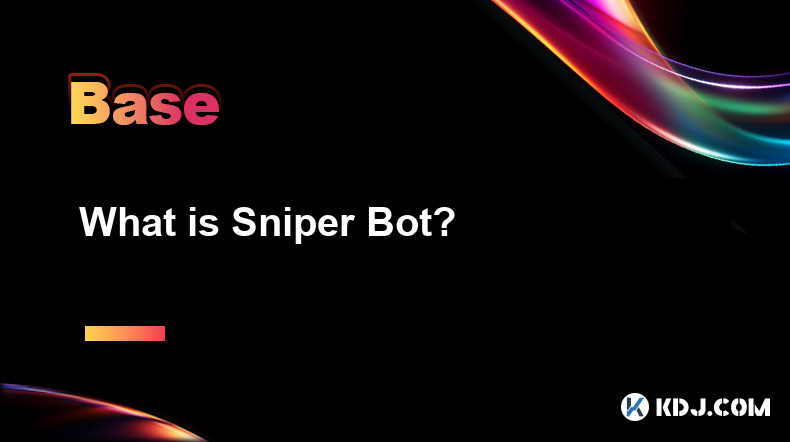
What is Sniper Bot?
Apr 07,2025 at 10:43pm
A Sniper Bot is a type of automated trading software used within the cryptocurrency market to execute trades at optimal times, often milliseconds before other traders. These bots are designed to take advantage of new token listings, price fluctuations, and other market opportunities to buy or sell assets quickly and efficiently. The primary goal of a Sn...

What is Mining Rig?
Apr 07,2025 at 11:08pm
A mining rig is a specialized computer system designed specifically for the purpose of mining cryptocurrencies. Mining, in the context of cryptocurrencies, refers to the process of solving complex mathematical problems to validate transactions and add them to the blockchain. This process requires significant computational power, and a mining rig is buil...
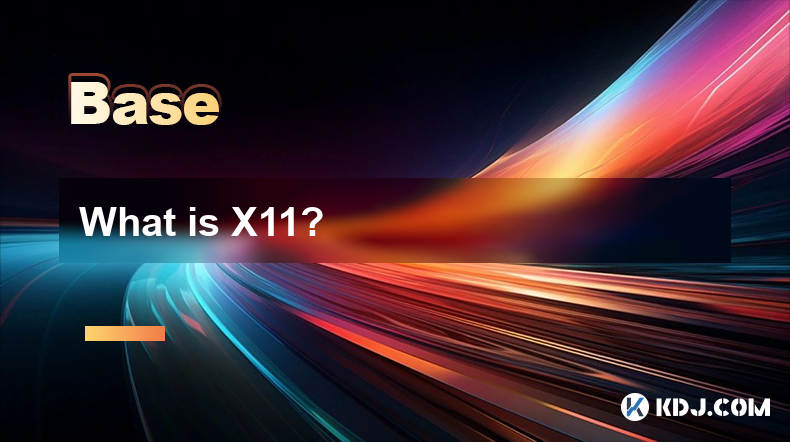
What is X11?
Apr 07,2025 at 09:22pm
What is X11? X11 is a cryptographic hash function used in various cryptocurrencies, most notably in the Dash cryptocurrency. It is designed to provide a high level of security and efficiency, making it a popular choice for blockchain networks. The X11 algorithm is unique because it uses a chain of 11 different hashing algorithms, which enhances its secu...
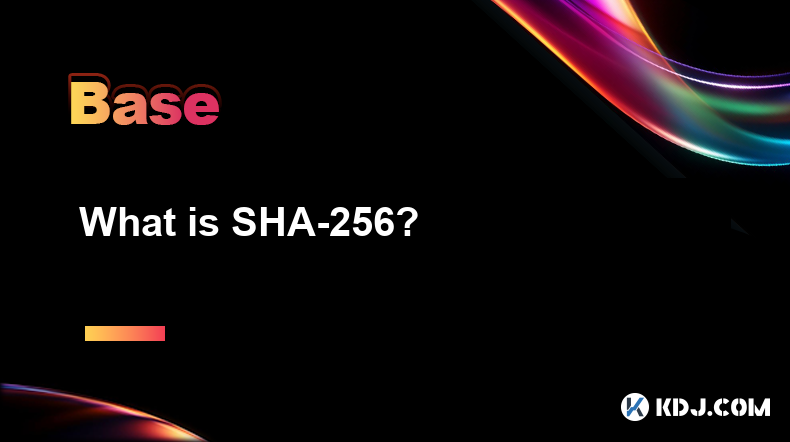
What is SHA-256?
Apr 07,2025 at 11:15pm
What is SHA-256?SHA-256, or Secure Hash Algorithm 256-bit, is a cryptographic hash function that is part of the SHA-2 family of hash functions. It is widely used in the cryptocurrency world, particularly in Bitcoin and other blockchain technologies, for securing data and ensuring the integrity of transactions. This article will delve into the specifics ...
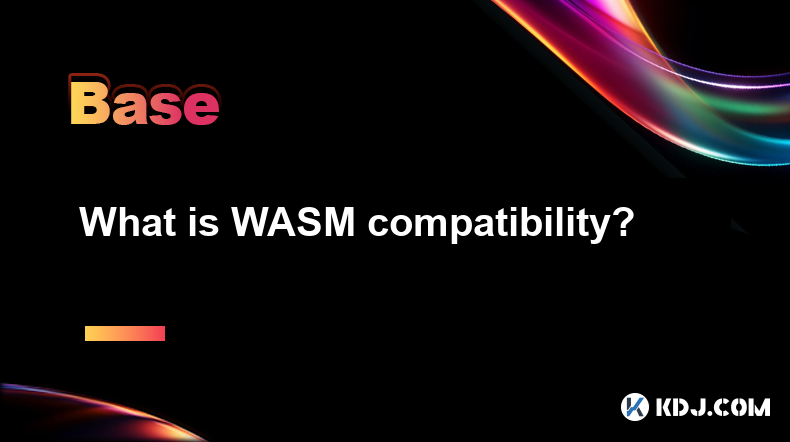
What is WASM compatibility?
Apr 07,2025 at 09:08pm
What is WASM Compatibility? WASM, or WebAssembly, is a binary instruction format for a stack-based virtual machine. It is designed to be a portable compilation target for programming languages, enabling deployment on the web for client and server applications. In the context of cryptocurrencies and blockchain technology, WASM compatibility refers to the...
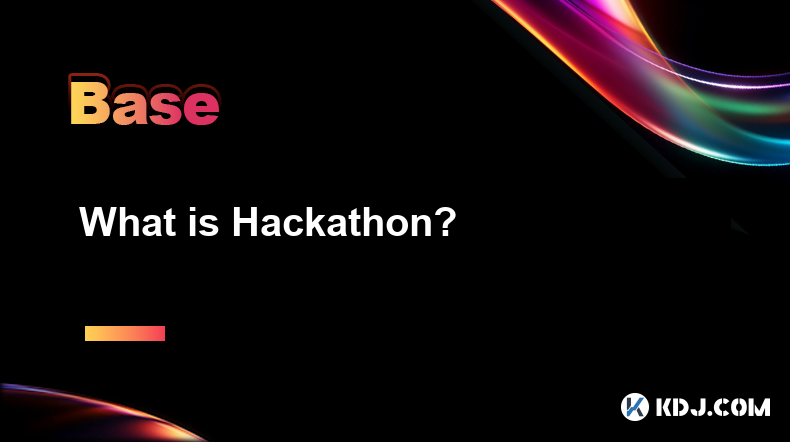
What is Hackathon?
Apr 07,2025 at 10:14pm
A Hackathon is an event where individuals or teams come together to collaborate intensively on software projects, often related to specific themes or challenges. In the context of the cryptocurrency circle, hackathons are frequently organized to foster innovation and development within the blockchain and crypto space. These events bring together develop...

What is Sniper Bot?
Apr 07,2025 at 10:43pm
A Sniper Bot is a type of automated trading software used within the cryptocurrency market to execute trades at optimal times, often milliseconds before other traders. These bots are designed to take advantage of new token listings, price fluctuations, and other market opportunities to buy or sell assets quickly and efficiently. The primary goal of a Sn...

What is Mining Rig?
Apr 07,2025 at 11:08pm
A mining rig is a specialized computer system designed specifically for the purpose of mining cryptocurrencies. Mining, in the context of cryptocurrencies, refers to the process of solving complex mathematical problems to validate transactions and add them to the blockchain. This process requires significant computational power, and a mining rig is buil...

What is X11?
Apr 07,2025 at 09:22pm
What is X11? X11 is a cryptographic hash function used in various cryptocurrencies, most notably in the Dash cryptocurrency. It is designed to provide a high level of security and efficiency, making it a popular choice for blockchain networks. The X11 algorithm is unique because it uses a chain of 11 different hashing algorithms, which enhances its secu...

What is SHA-256?
Apr 07,2025 at 11:15pm
What is SHA-256?SHA-256, or Secure Hash Algorithm 256-bit, is a cryptographic hash function that is part of the SHA-2 family of hash functions. It is widely used in the cryptocurrency world, particularly in Bitcoin and other blockchain technologies, for securing data and ensuring the integrity of transactions. This article will delve into the specifics ...

What is WASM compatibility?
Apr 07,2025 at 09:08pm
What is WASM Compatibility? WASM, or WebAssembly, is a binary instruction format for a stack-based virtual machine. It is designed to be a portable compilation target for programming languages, enabling deployment on the web for client and server applications. In the context of cryptocurrencies and blockchain technology, WASM compatibility refers to the...

What is Hackathon?
Apr 07,2025 at 10:14pm
A Hackathon is an event where individuals or teams come together to collaborate intensively on software projects, often related to specific themes or challenges. In the context of the cryptocurrency circle, hackathons are frequently organized to foster innovation and development within the blockchain and crypto space. These events bring together develop...
See all articles





















































































